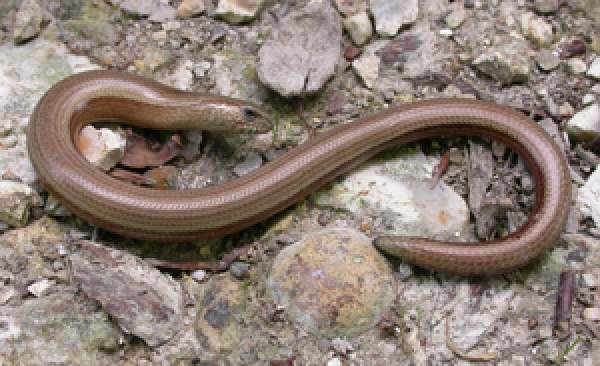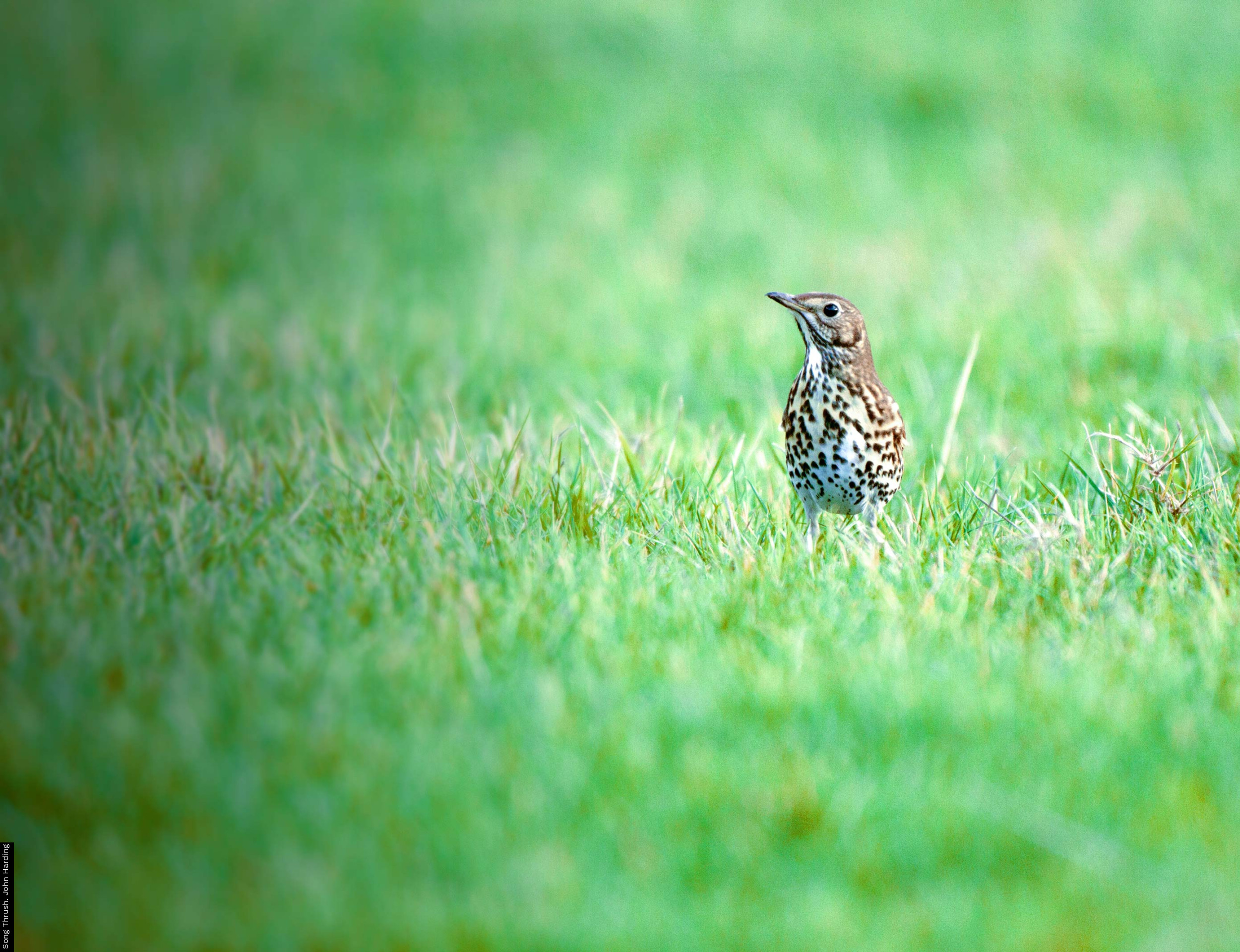Slow-worm
Anguis fragilis

An adult Slow-worm is typically about 30cm in length, with a uniform cylindrical body - i.e. without the narrowing behind the head that gives snakes their characteristic 'neck'. Unlike a snake, the Slow-worm has visible eyelids that blink regularly and smooth, shiny scales that display a metallic appearance. It is the extreme smoothness of the scales that results in the 'highly polished' appearance. The overall body colour is a shiny grey-brown, usually with thin longitudinal stripes of a darker colour. The exact appearance may vary from one individual to another but older males usually sport a series of small spots, blue in colour.
Slow-worms have two key requirements for where they live; access to sunlight and thick vegetation. Thanks to this, they have adapted to many different habitats, including gardens. They are not usually seen abroad during daylight but are most commonly encountered sheltering under logs, stones or other objects. They emerge from these at dusk to search for slugs, worms, spiders and various insects.
Unfortunately Slow-worms are on the menu for many species. They are eaten by Adders, many species of birds including Pheasants, Hedgehogs, Badgers and domestic cats. Like all lizards, Slow-worms have ways to avoid being eaten. The first is to defecate, which produces a foul smell that may put off some predators. The second is that it can shed its tail which wriggles and distracts the predator while the Slow-worm escapes.
Slow-worms are protected under the Wildlife and Countryside Act 1981.
The Slow-worm is ovo-viviparous, which means that the eggs hatch either as they are laid or some minutes later. The emerging young from an average litter of 6-12 become independent straight away and are miniature versions of their parents just 6.5-9 cm in length. By two years of age, they can reach 21-23 cm in length. With at least one captive individual living beyond 50 years of age, wild individuals could possibly live for 20 years of more. Hibernation lasts from late October through to the start of March, with Slow-worms sometimes sharing their hibernacula with other reptiles. Mating, often quite a rough affair, takes place some weeks after emerging from hibernation.
Interactive map of Slow-worm distribution on NBN Gateway






Share this page